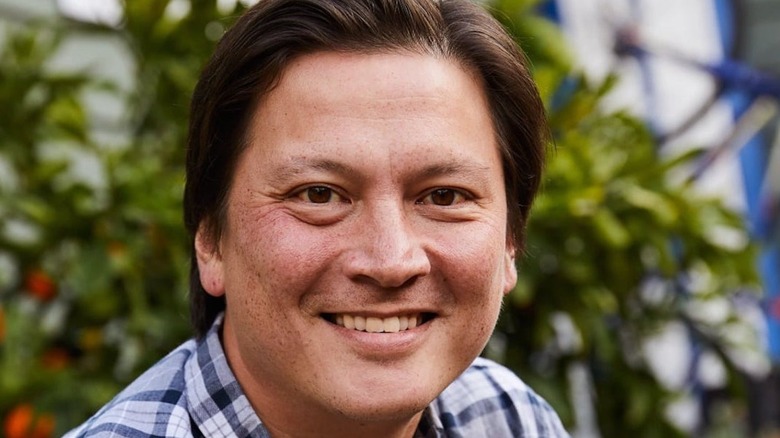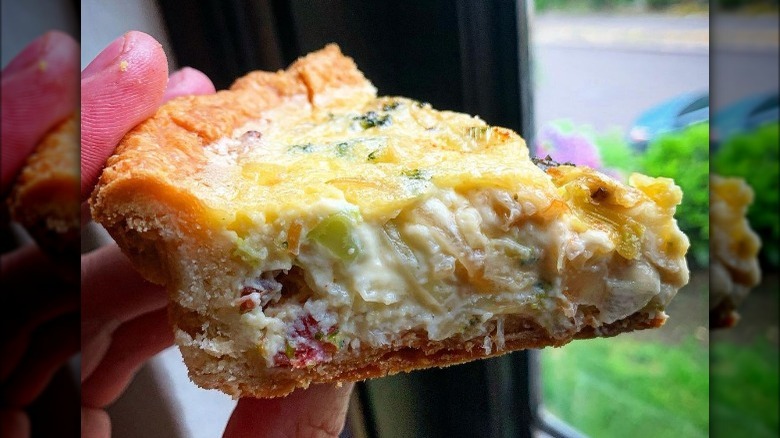What Leftovers Look Like In J. Kenji López-Alt's Household
We may receive a commission on purchases made from links.
Because the world of pie is generally divided into savory and sweet, we don't usually think of a pie crust as versatile enough to be used to make both. But veteran food writer J. Kenji López-Alt dispels that idea in a recent Instagram post, where he lays out the case for using leftovers to build a mouthwatering quiche — and it begins with leftover dough which had come from what might be an unexpected pastry. "Leftover pie dough from the blueberry pie = cheese scrap quiche. 2 eggs, a cup of heavy cream and half cup of milk, nutmeg, rendered bacon, shallot and leek cooked in the bacon fat and whatever cheese was close to finished in the fridge," López-Alt wrote.
He also shared tips on how to prepare the blueberry pie crust-turned-quiche base, saying that he baked the crust until it was "nice and crisp," then finished it at 300 degrees Fahrenheit for around an hour, until the quiche was "barely jiggly."
López-Alt's quiche was likely built on leftover flaky pastry
MasterClass says that while all pastry doughs begin as a mixture of flour, water, and fat — either as lard, butter, or shortening, per Crafty Baking — there are actually five different kinds of dough that can be used to make a pastry: flaky, shortcrust, puff, choux, and filo. While just about all can be used to make a savory pie, flaky pastry is the one López-Alt is likely to have turned to, because as MasterClass says, it is quick, simple, and can be used to make both sweet and savory pies. (Also, through some sleuthing we found that López-Alt's flagship easy pie dough recipe at Serious Eats is indeed flaky.)
Martha Stewart's version of this classic dough, also known as Pâte Brisée, is pulled together using flour, salt, sugar, unsalted butter, and ice water. Martha's version makes use of a food processor to pull it all together, although Food.com says a blender will work, too. When making your classic pastry dough, remember to only mix together until it holds together, or, as MasterClass points out, you end up with a "tough and crumbly pastry."

